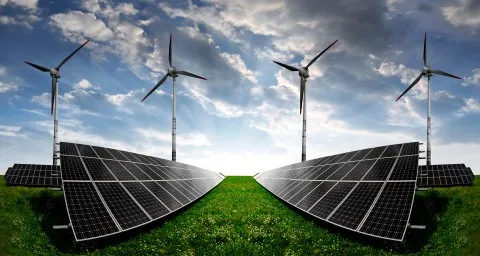
Why ASEAN turns to mixed renewables incentives to spur growth
With incentives and policies showing a palpable positive effect in RE development, ASEAN countries are striking a balance between fine-tuning existing initiatives and new ones.
When ASEAN countries ask which single renewable energy, or RE, incentive will prove most beneficial to their development plans, the question itself could be flawed as the region has seen the most effective results not from a single bullet solution but from a basket of measures. Countries with a combination of incentives have experienced the greatest growth in renewable power, said Supawan Saelim, renewable energy policy specialist at USAID Clean Power Asi, a 5-year program aims to increase the deployment in grid-connected RE in Asia.
“Feed-in tariffs have been the key incentive, usually combined with soft loans and tax incentives," said Saelim, but so far, only three ASEAN countries - Indonesia, Malaysia and Thailand - offer this optimal trio of incentives for grid-connected RE power. The Philippines and Vietnam have FiT and tax incentives in place, but do not provide lower-interest-rate loans. Myanmar, Singapore, Cambodia and Lao PDR only provide tax incentives. Meanwhile, Brunei has none of the three.
It doesn't come as a surprise then that Thailand leads in RE installed capacity in the region, with 6.2GW, followed by the Philippines at 3.6GW, Indonesia at 3.6GW, Malaysia at 1.5GW and Vietnam at 0.7GW, according to data compiled from IRENA renewable capacity and generation statistics.
Between 2012 and 2016, RE installed capacity in the ASEAN region grew from 9.7GW to 16.0GW, led by gains in Thailand, the Philippines and Indonesia. Thailand, in particular, has shown a notable pickup in RE installed capacity, more than doubling from 2.8GW to 6.2GW in the five-year period.
While a combination of incentives can significantly accelerate RE development, Melati Wulandari, technical officer, ASEAN-German energy programme at ASEAN Centre for Energy noted that policy measures that target the reduction of capital and operating costs can lead to lower RE costs, which then creates a similar enabling effect for the sector.
Wulandari said the two policies that lead to the lowest RE cost, citing the levelised cost of electricity of selected renewable technologies in ASEAN. First, reducing ROE at 12% brings the RE cost to US$0.1626/kWh from the current US$0.187/kWh with baseline parameters. The second is lowering the interest rate at 3%, which brings the RE cost down to US$0.1637/kWh.
Two other policies that bring down the RE cost are increasing the debt share to 80%, which results in a US$0.1671/kWh cost, and removing duties and taxes, which reduces it to US$0.17/kWh.
Meanwhile, policies such as 5-year income tax holidays and longer 10-year loan terms will not lower the RE cost. Finally, a lower corporate tax of 18% actually raises the RE cost to US$0.1909/kWh.
With incentives and policies showing a palpable positive effect in RE development, ASEAN countries are striking a balance between fine-tuning existing initiatives and new ones. The Philippines, for example, is in the process of rolling out Renewable Portfolio Standards, the Green Energy Option Program and net metering alongside FiTs and fiscal incentives, said Marissa P. Cerezo, assistant director at the Renewable Energy Management Bureau.
The country is looking to finalize the implementing rules on Renewable Portfolio Standards, or RPS, that creates a mandated minimum percentage of RE generation. Regional public consultations were completed in 2017, and a draft has been endorsed to the Department of Energy for consideration. Another key policy in the pipeline is the Green Energy Option Program, which creates open access enabling end users to choose to purchase electricity from RE facilities. This, too, has finished nationwide public consultations and has been endorsed to the energy department. The net metering program is also progressing, said Cerezo, with nearly 1,000 customers connected to 10 different distribution utilities in the country under net metering agreements, amounting to nearly 6,500kWp, as of August this year.








![Cross Domain [Manu + SBR + ABF + ABR + FMCG + HBR + ]](https://cmg-qa.s3.ap-southeast-1.amazonaws.com/s3fs-public/styles/exclusive_featured_article/public/2025-01/earth-3537401_1920_4.jpg.webp?itok=WaRpTJwE)
![Cross Domain [SBR + ABR]](https://cmg-qa.s3.ap-southeast-1.amazonaws.com/s3fs-public/styles/exclusive_featured_article/public/2025-01/pexels-jahoo-867092-2_1.jpg.webp?itok=o7MUL1oO)









 Advertise
Advertise


